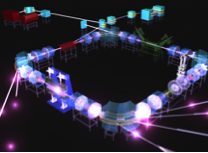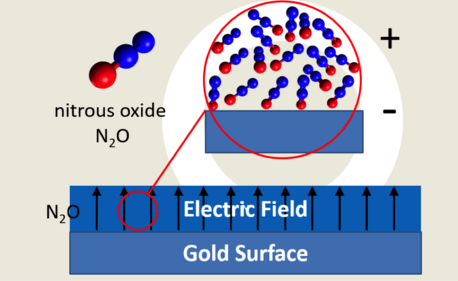Spectrum of solid CO shows extreme temperature sensitivity
IFA's David Field and Andrew Cassidy are co-authors of a new paper in Physical Review Letters describing some surprising aspects of extremely cold solid carbon monoxide - CO

The colour of a solid is determined largely by its chemical composition, which itself governs the wavelength of which it absorbs and reflects – it is in fact the reflected light which regulates the colour. This is of course very well known, but what has been a puzzle for many years is the extreme sensitivity of the absorption spectrum of solids to the temperature at which they were formed, for example by deposition from the gas phase onto a cold surface. In a new article in Physical Review Letters the authors for the first time give an explanation for how this could be, using carbon monoxide (CO) as an example. David Field and Andrew Cassidy from the Institute of Physics and Astronomy at Aarhus University are co-authors on this publication.
What is reported is that solid CO shows a different absorption spectrum when it is deposited at temperatures which differ by as little as -253oC and -254oC. This is rather remarkable and the explanation turns out to be that this peculiar behaviour is due to a phenomenon discovered here in Aarhus, using the ASTRID synchrotron radiation storage ring, namely the ‘spontelectric effect’.
Spontelektricity in N2O
What is the spontelectric effect? The CO molecule has a dipole moment, that is to say, that electrons pile up a little more at one end of the molecule than the other, a little more on the carbon end than on the oxygen. When CO is frozen down on any surface from its normal state as a gas, the dipoles tend to orient so that the whole film becomes polarized and spontaneously contains an electric field. This field is pretty large: in CO it is about 40 million volts per metre and we call it the ‘spontelectric field’.
When our solid CO film absorbs light in the ultraviolet, in this case light from the storage ring in Taiwan, electrons are excited from the normal stable state, the ‘valence band’, into what is termed the ‘conduction band’. This leaves a positive ‘hole’ behind and a negative electron which is present in the conduction band, forming a so-called, electron-hole pair. Very unexpectedly, this electron and hole prove to very far apart, that is, 5 nm or more. The spontelectric field pushes them still further apart and this field is temperature dependent. So the absorption energy of the film of CO itself becomes temperature dependent, matching what you observe. This effect also shows up strongly in nitrous oxide, tested on ASTRID2 at Aarhus.
This ground-breaking study identifies a new but likely common phenomenon in many insulators, which could impact on the development of light harvesting in solar cells.
The paper, titeled "Wannier-Mott Excitons in Nanoscale Molecular Ices" is available here.

